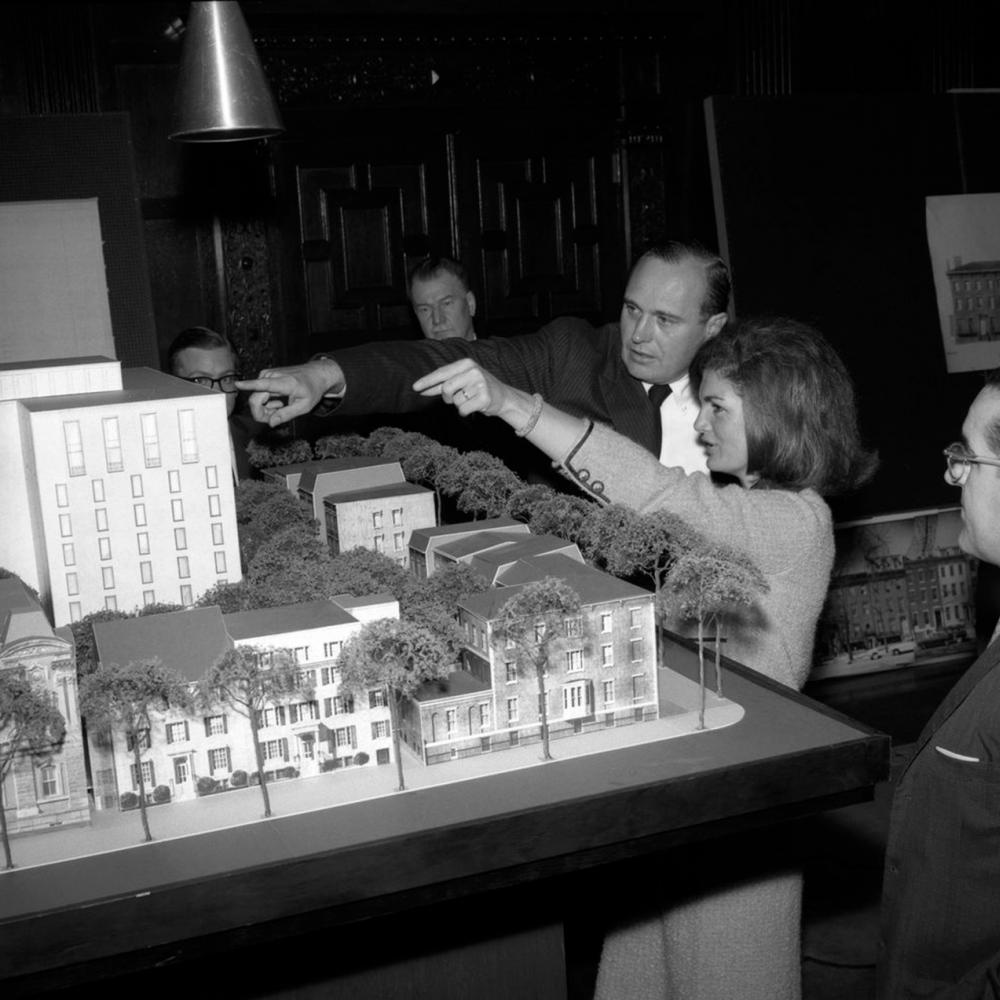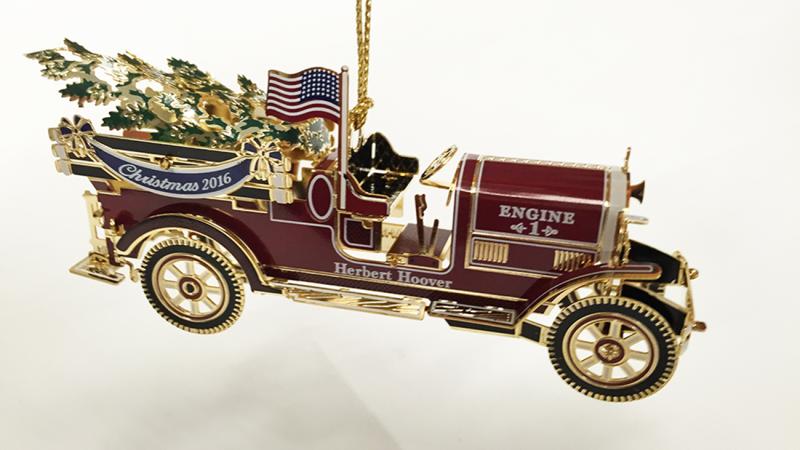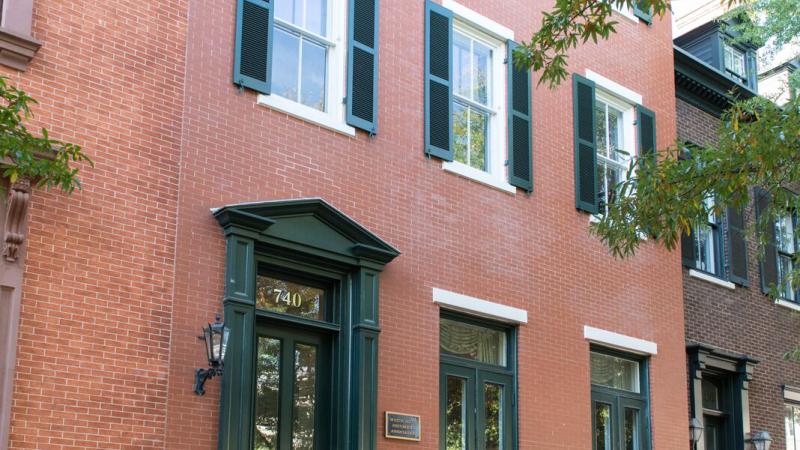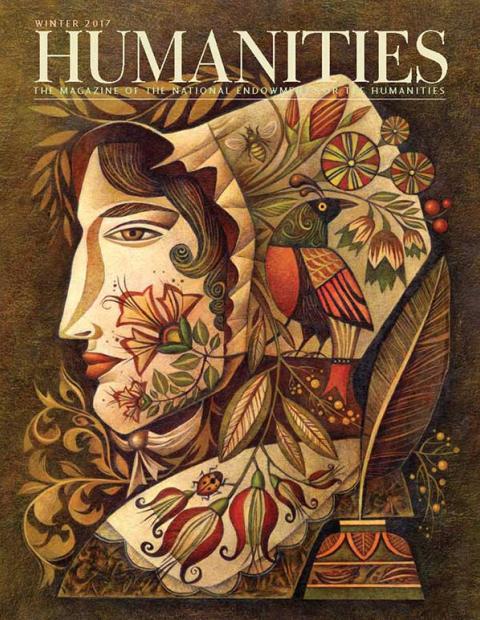Shortly after moving into the White House in 1961, Mr. and Mrs. John F. Kennedy became intensely interested in plans afoot to redevelop Lafayette Square, opposite their new address at 1600 Pennsylvania Avenue. Several architectural firms, the U.S. Commission of Fine Arts, and the General Services Administration were the principal players, and talks centered on the style of new office buildings to be built there. Some camps favored a Beaux Arts structure, others, more modernist. Whichever style won out would have to be in harmony with the historic buildings surrounding the square, including St. John’s Church on the north and the White House on the south. Previously, President Eisenhower had also weighed in, suggesting that the historic Decatur House on the northwest side of the square and the Blair House on the southwest, both on Jackson Place, be spared and incorporated into any future plans. Mrs. Kennedy favored the winning plan that would create a seamless facade of nineteenth-century residences on Jackson Place, the western side of the square. The New Executive Office Building, built during the renovation, is set back from the square and rises unobtrusively above the row of town houses.
Thanks to that sensibility, today the White House Historical Association, founded in 1961 and headed by Stewart McLaurin, does its fundraising, preservation, and acquisition work in a town house sitting next door to the Stephen Decatur historical house and museum, on the northwest corner of Lafayette Square. From this choice piece of real estate, McLaurin’s small staff assures the public has access to either the White House itself, through special tours, or to the recently revamped White House Visitor Center on Pennsylvania Avenue as it doglegs to the southeast of the president’s residence.
When I first meet McLaurin, on a stifling day in August, he’s cool and collected, but I soon see his passion for his work simmers just beneath the surface. “I’m a connector,” he says, looking me straight in the eye and filling me in on how he sees his role at the association. The WHHA, to use the acronym, is an “advocate of accessibility and respectful of security.” “Our job,” he says “is as a private partner for the White House to maintain top museum standards.”
Among those standards is purchasing appropriate additions for the art collection. Recently acquired was a work by Alma Thomas, who is the first female African-American artist to have a painting displayed in the White House. The first African-American male accorded that honor, in 1995, was Henry Ossawa Tanner. Aside from those who create portraits of present and recent presidents and first ladies, by tradition no artist can have work hanging in the White House until 25 years after their death.
Maintaining high standards in the living museum requires what some in the capital call the national pastime—fundraising. White House Christmas tree ornaments have been successful for over 35 years in bringing in funds needed for conservation and preservation. The 2016 ornament, sold at the gift shop at the Decatur House and through the association’s catalog and website, was a three-and-a-half-inch replica of the fire engine that answered a call on Christmas Eve, 1929, for a fire that started in the West Wing. From a nearby station, Engine No. 1—the truck used as a model for the brass-plated ornament—responded promptly. It was one of 19 engine companies and 4 truck companies to help battle the blaze.
Some of the lesser known work of the association includes, according to McLaurin, the seemingly mundane efforts to preserve items such as the red carpet and drapes or purchase a new rug for the State Room. “We preserve the stage upon which the history of the country is performed,” he says with obvious pride.
Several turning points come to mind in the transformation of the White House, but aside from its busy role heading up the executive branch of government, it has always been there for the public, often with remarkably free access. As late as the late 1930s, it was possible to drive through the gates and past the front entrance beneath the North Portico. Since 9/11, though, access has been greatly restricted, but, still, the public can gain access at special times of the year, and the many guests attending official functions experience the house, too, as a living museum. It was Jackie Kennedy who saw the historic value more clearly than most first ladies. There are photographs of her in the attic, says McLaurin, “with an urn under one arm and a vase in her hand.”
Mrs. Kennedy made significant decoration choices for the library and many of the other rooms (including the Blue, Green, and Red) on the State Floor. Aside from the Monroes, who brought in well over 50 pieces of furniture in 1817, much of it from Paris and their residence there, it’s difficult to imagine anyone else who made as many decisions regarding the decorative arts found in the White House. “In fact,” adds McLaurin, “anyone could come in and throw out whatever they wanted” (“anyone” here, meaning anyone from an incoming administration).
The idea that the White House was a museum, to be preserved for the American people, McLaurin says, started in 1948, when a comprehensive policy was implemented that no article from the White House could simply be discarded for another. Thus began the house’s genuine preservation efforts. Earlier residents, though, began the initiative to preserve in various ways: First Lady Caroline Harrison organized the surviving pieces of china from previous administrations, Edith Wilson came up with the idea to display the items in a “China” room, and Lou Hoover established the Monroe Room, furnished with reproductions of the furniture first brought to the executive mansion by President and First Lady Monroe.
McLaurin feels that, ironically, even though George Washington never lived there (the house was completed in 1802), “you sense his presence.” The piece of art that’s been in the White House the longest is the Gilbert Stuart portrait of Washington, which is "almost like a monument that towers over you,” as McLaurin describes it. This is also the one piece that Dolley Madison insisted on saving as British soldiers, intent on burning the house to the ground, approached the White House in 1814.
The aftermath of the damage done by the British became the first of several significant renovations. The original architect, James Hoban, came back to work on the White House in 1814, after architect Benjamin Henry Latrobe had added the east and west wings for Jefferson. It was Hoban, however, who designed the distinctive north and south porches. The Teddy Roosevelt renovation in the early twentieth century is generally regarded as a “re-invention,” and was masterfully executed by Charles Follen McKim. The Harvard graduate also studied architecture in Paris at the École des Beaux-Arts; his professors would have approved highly of his deft integration of modern technology with historical design. Lorenzo Simmons Winslow, the third architect, designed the indoor swimming pool Franklin Roosevelt used for exercise. It was, however, Winslow’s work on the Truman renovation from 1948 to 1952 that was the most spectacular. The White House was completely gutted, exterior walls of the façade were supported by steel girders, and bulldozers worked for a time in the interior, digging out a basement level, while the Trumans lived across Pennsylvania Avenue in Blair House. Truman insisted that the façade remain intact throughout the work, ensuring that the house’s role as a symbol remained firmly in the minds of the American public.
Strolling from room to room today on the State Floor, the part of the White House available to the public during tours, I, along with many others who have toured the house, accept the illusion that things have always been the way they appear today, more or less. Not many people who have stood in or seen pictures of Cross Hall think twice about whether the Grand Staircase is the original one. They assume it is. It isn’t. It’s actually the fifth. And the set of marble columns there is the fourth since 1800. The China Room changes incrementally, with ceramics, glass, and silver owned or used by many first families. Each first lady has a pet project. Appropriately enough for a former librarian, Laura Bush took on redecorating the library. Maintaining a historical continuity for all of this falls in large part to the association.
Supplementing the decorative arts on view in the White House itself is a collection of artifacts found nearby relating to both historic events and everyday living in the president’s mansion. The White House Visitor Center, taking up 16,000 square feet of the ground floor of the Commerce Department building (just off President’s Park) houses an eclectic array of curious pieces, such as the Indian pins Calvin Coolidge used to keep himself limber and the telegraph machine that received Grant’s message that Lee had surrendered. Seen collectively and out of context, you might think the objects would lack something of their historical luster, but they can spark the imagination in unexpected ways, as does the centerpiece acquired by First Lady Julia Grant, a silver boat depicting the story of Longfellow’s Hiawatha. Filled with flowers, it adorned the table at state dinners for decades. For pure poignancy, there’s the tiny rocking chair Lady Bird Johnson added to the suite of furniture in the Children’s Garden in 1969. Then, too, there’s the Kenmore sewing machine that seamstress Lillian Rogers Parks used to make blackout curtains for the White House windows in World War II. She worked there for 30 years.
McLaurin has vivid memories of visiting Mount Vernon on a school trip as a fifth grader. Does a sense of awe, I can’t help wondering, come over groups on school trips to the capital these days? “Young people have a different perspective of the White House today,” he acknowledges. McLaurin was a curator for George Washington’s library at Mount Vernon and more recently involved with American Village Citizenship Trust, which through its recreation of colonial-era sites instills in young people an interest in the principles of the Constitution and the American founding.
All that historical expertise and experience has stood the native Alabamian in good stead for the duties of his current post. Whatever the project at the White House, McLaurin and his staff are on it. “We put wind in the sails of making that happen.”




